Moving to the dark side: energy-efficient dark circuits on AMOLED displays
It became interesting to me how justified the advice is to use dark screen layouts to save energy on AMOLED displays. No, in that it consumes less, there was no doubt - since fewer screen pixels are ignited, then less energy should be consumed. But how many times, is it worth it to endure the inconvenience, or is the savings negligible? I gathered in haste a test bench:
As a guinea was used already familiar Galaxy Note II.
I planned to connect to the battery, but it turned out that the multimeter breaks the circuit when changing the measurement limits, and the phone turns off. I had to connect to the gap in the power cord. Given that the battery was fully charged, and the current with the phone turned off was almost zero, this did not affect the measurement results (I hope).

A little information. Amoled displays (Active Matrix Organic Light-Emitting Diode) differs from ordinary LCD screens in that it does not have the usual backlight and pixels that “open” to let in the right light. It can be compared with an LED display, where there are only three-color LEDs that directly form the image, lighting up in the right places.
While backlighting works constantly on LCD displays, regardless of whether the pixels are “open” or “closed” (they let all the light out of the backlight or delay most of it), in AMOLED displays, in black areas of the screen, the LEDs simply do not light up, and thus do not consume energy.
My task is to find out if there really is a big difference in the power consumption of the screen in dark schemes (where the background is dark, but white letters and interface elements) and light (where the background is light, but the letters are dark).
Let's get started.
The Samsung Galaxy Note II phone, the display of which I already showed in the previous topic, but will show again: In the off state, it consumed 10mA. We assume that this is the current consumption of the converter for charging the battery and related equipment. Switch the multimeter to delta mode, in which it shows only the difference between the current consumption and recorded in memory. Thus, he will subtract 10mA from all readings. This could be done manually, but I'm playing with a new multimeter.


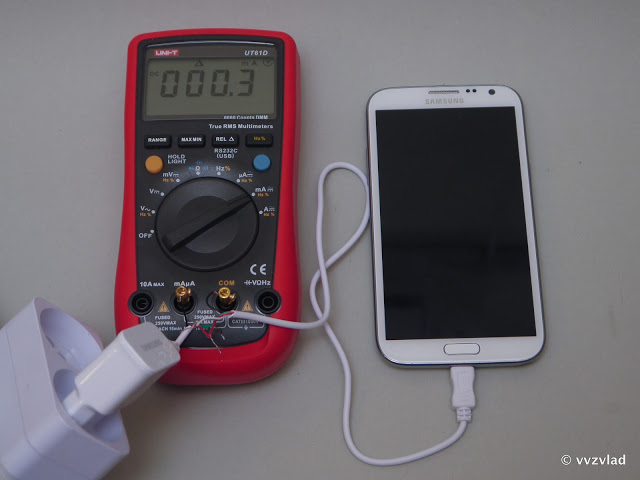
We took the quiescent current (phone consumption off) for 0. Press the power button: When loading, the current changes significantly - from 100mA to 500. I managed to catch the value of 223mA. After full load, the current changed downward: 180mA. It is worth considering that this is not full brightness. We go to the desktop and the current rises to 213: Go to the menu (it just has a dark interface): Oops. 126mA. A little uncorrelated. In order to know for sure - you need to find a black and white picture, and then invert it. I did this in a book reader, I think this is the most correct testing - processor loading is not so affected, and most of the energy consumption falls on the screen. Enough words! Light theme (day mode):

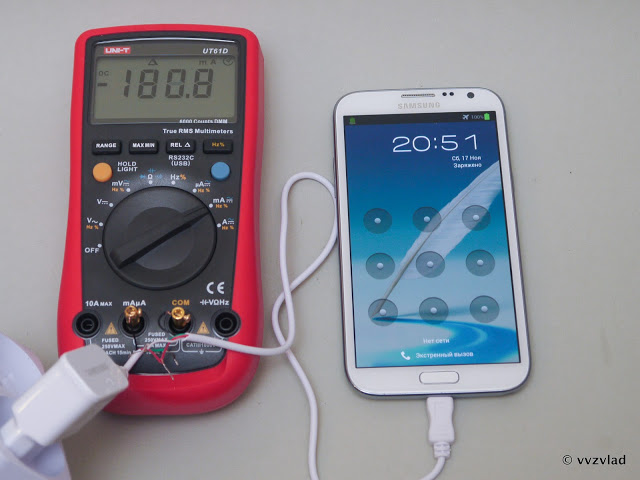
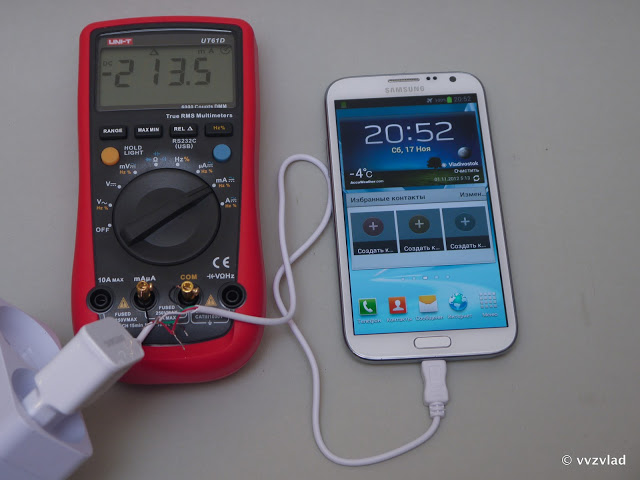
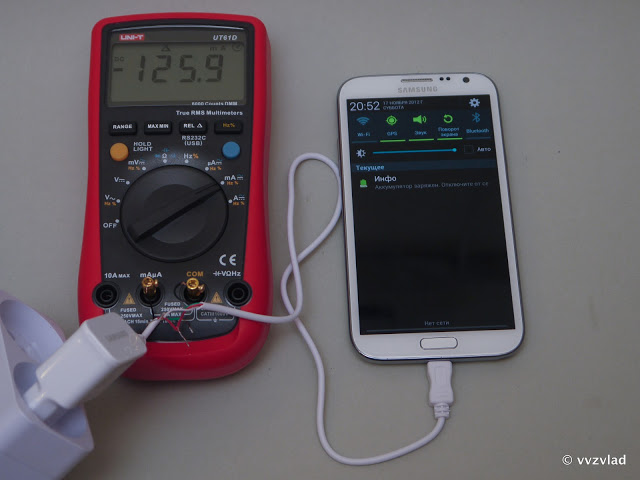
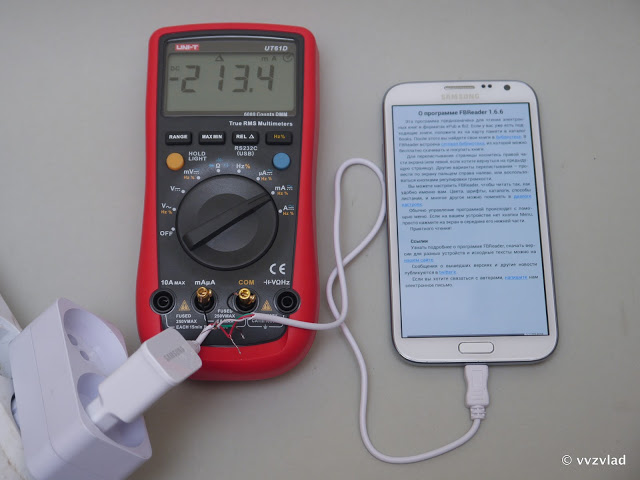
Dark theme (night mode): The difference is 160mA and 213mA. We’ll take a couple more measurements and tabulate the results. However, the savings are 30%. Let’s estimate how this will affect the phone’s operating time: The line “When using a dark circuit instead of a light one” shows the change in operating time relative to your usual time for which the battery sits down when switching from light to dark. Suppose your spherical phone lives on a day without charge, and uses a light circuit. Switching to the dark one, you will get not 24 hours of work, but 31 :) And if you are tired of raping your eyes and you turn on the light circuit, instead of the dark one by default, your phone will sit down for 14 hours instead of the usual 24. This can be seen in the line “When using a light scheme instead of a dark one”
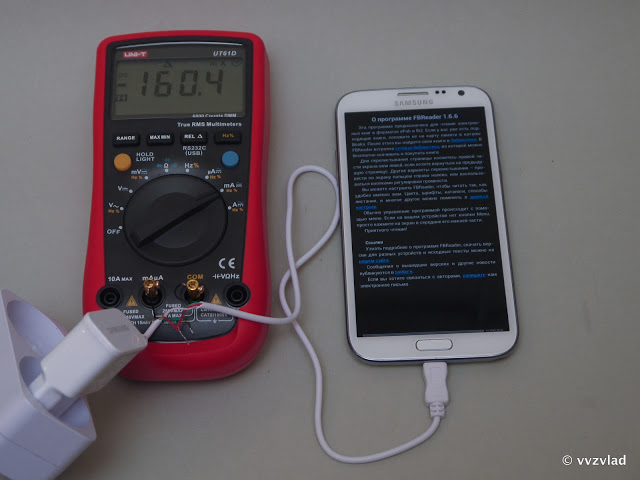
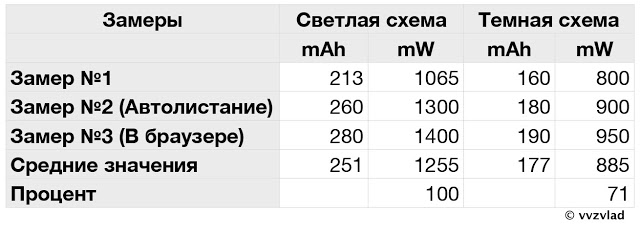
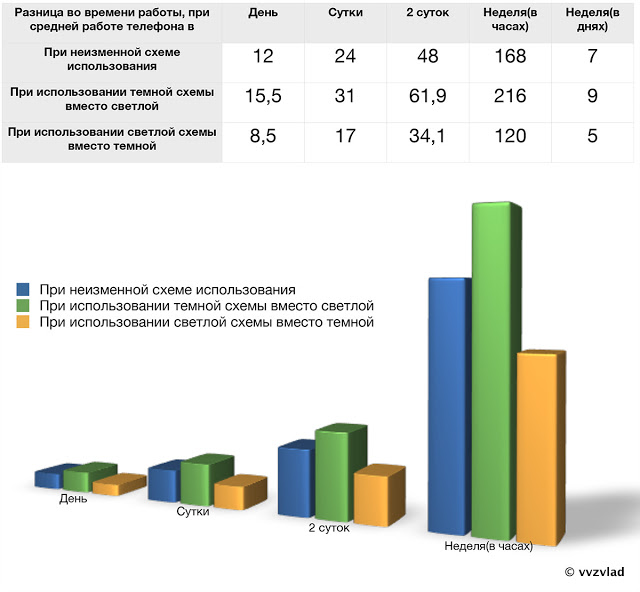
Of course, this estimate is very incorrect - it does not take into account processor consumption, nor radio interfaces, nor different colors in programs. But still, it shows the difference between dark and light schemes - it is more than noticeable.
As usual, you can subscribe to me (so as not to miss new articles) in my profile (“subscribe” button)

A little information. Amoled displays (Active Matrix Organic Light-Emitting Diode) differs from ordinary LCD screens in that it does not have the usual backlight and pixels that “open” to let in the right light. It can be compared with an LED display, where there are only three-color LEDs that directly form the image, lighting up in the right places.
While backlighting works constantly on LCD displays, regardless of whether the pixels are “open” or “closed” (they let all the light out of the backlight or delay most of it), in AMOLED displays, in black areas of the screen, the LEDs simply do not light up, and thus do not consume energy.
My task is to find out if there really is a big difference in the power consumption of the screen in dark schemes (where the background is dark, but white letters and interface elements) and light (where the background is light, but the letters are dark).
Let's get started.
The Samsung Galaxy Note II phone, the display of which I already showed in the previous topic, but will show again: In the off state, it consumed 10mA. We assume that this is the current consumption of the converter for charging the battery and related equipment. Switch the multimeter to delta mode, in which it shows only the difference between the current consumption and recorded in memory. Thus, he will subtract 10mA from all readings. This could be done manually, but I'm playing with a new multimeter.



We took the quiescent current (phone consumption off) for 0. Press the power button: When loading, the current changes significantly - from 100mA to 500. I managed to catch the value of 223mA. After full load, the current changed downward: 180mA. It is worth considering that this is not full brightness. We go to the desktop and the current rises to 213: Go to the menu (it just has a dark interface): Oops. 126mA. A little uncorrelated. In order to know for sure - you need to find a black and white picture, and then invert it. I did this in a book reader, I think this is the most correct testing - processor loading is not so affected, and most of the energy consumption falls on the screen. Enough words! Light theme (day mode):





Dark theme (night mode): The difference is 160mA and 213mA. We’ll take a couple more measurements and tabulate the results. However, the savings are 30%. Let’s estimate how this will affect the phone’s operating time: The line “When using a dark circuit instead of a light one” shows the change in operating time relative to your usual time for which the battery sits down when switching from light to dark. Suppose your spherical phone lives on a day without charge, and uses a light circuit. Switching to the dark one, you will get not 24 hours of work, but 31 :) And if you are tired of raping your eyes and you turn on the light circuit, instead of the dark one by default, your phone will sit down for 14 hours instead of the usual 24. This can be seen in the line “When using a light scheme instead of a dark one”



Of course, this estimate is very incorrect - it does not take into account processor consumption, nor radio interfaces, nor different colors in programs. But still, it shows the difference between dark and light schemes - it is more than noticeable.
As usual, you can subscribe to me (so as not to miss new articles) in my profile (“subscribe” button)
